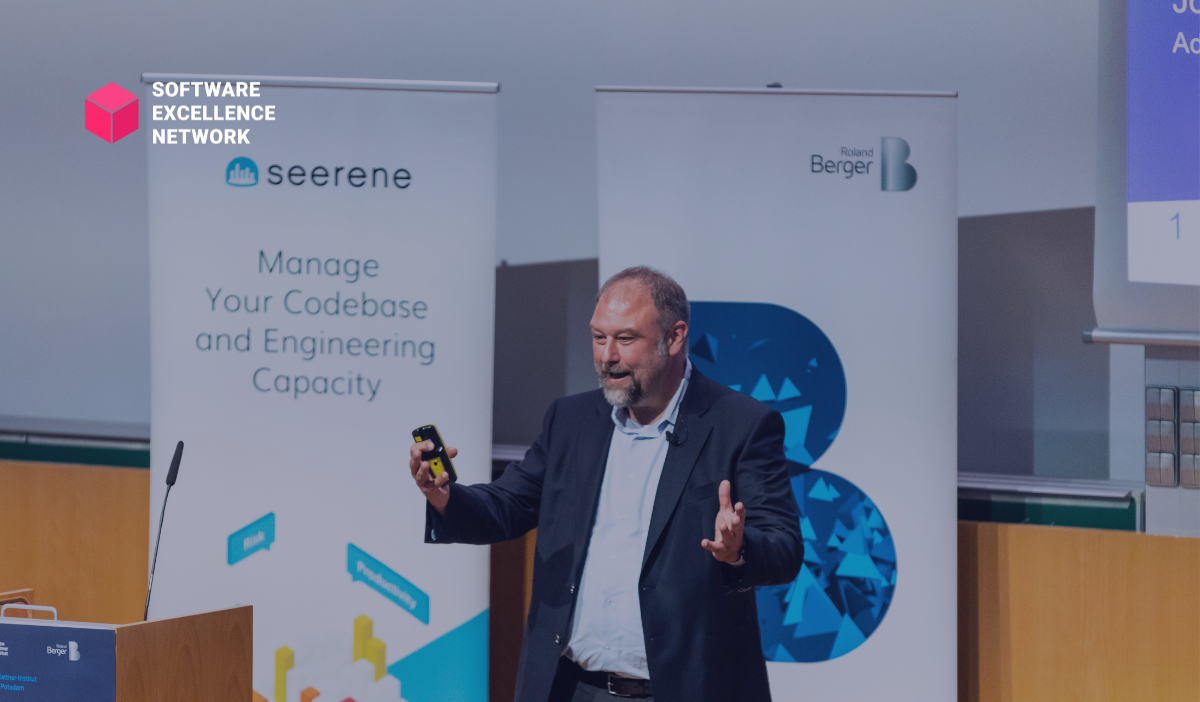
At the Learning Curves event, Joerg Seitter, Head of Advance Engineering at ETAS, shared a masterclass that was both deeply personal and profoundly visionary. Drawing from his unique career path and extensive experience, Seitter illuminated the challenges and opportunities in transitioning to software-defined vehicles (SDVs). His talk underscored the importance of convergence—between technologies, industries, and mindsets—as the key to unlocking the automotive industry's future.
Seitter's story begins outside the automotive world. Coming from a background in business IT, he fell in love with data and databases early in his career. Defying conventional advice, he pursued his passion, which eventually led him to the automotive sector seven years ago.
His transition into the industry was marked by a startling realization: vehicles are fundamentally different from the business systems he had worked with. "In business IT, software touches numbers. Here, it touches lives," Seitter remarked, emphasizing the life-or-death stakes of automotive software.
This perspective reshaped how he approached automotive engineering. Unlike business systems, where errors might lead to financial losses, errors in automotive software can jeopardize human safety. This stark reality has driven the industry's cautious and meticulous approach to software development—a mindset that must evolve to meet the demands of the future.
For decades, automotive innovation has been constrained by a hardware-centric development model. Seitter described how manufacturers have traditionally relied on a “divide-and-conquer” strategy: breaking down complex systems into manageable components and coordinating these parts through mechanical and digital interfaces.
While this approach has delivered reliable vehicles, it has also created a rigid, distributed architecture that lacks the flexibility required for modern, software-centric innovation.
We are heading toward a new era where features are defined by software, as Seitter explained. However, achieving this vision requires a fundamental shift in how vehicles are designed and built.
The move to software-defined vehicles is not as simple as applying IT solutions to automotive challenges. Seitter emphasized the unique constraints of vehicles as cyber-physical systems:
Despite these challenges, the benefits of transitioning to SDVs are compelling. With a software-first approach, manufacturers can achieve greater flexibility, faster updates, and the ability to introduce new features throughout a vehicle's lifecycle.
Seitter drew valuable lessons from his background in IT, particularly the success of platform-based ecosystems. He pointed to the dominance of the PC-Windows platform as a model for enabling widespread software innovation.
However, he expressed caution about directly replicating this approach in the automotive sector. Unlike PCs, vehicles require rigorous safety standards and real-time reliability that off-the-shelf solutions cannot guarantee.
Instead, Seitter championed a data-driven approach. By leveraging connectivity and over-the-air updates, manufacturers can continuously improve vehicle performance and introduce new features. This approach also enables a feedback loop where data collected from vehicles informs future development—a critical capability for SDVs.
One of the most pressing challenges Seitter identified is the cultural divide between the real-time safety community and the IT/cloud community.
These two worlds often operate in silos, as Seitter observed. The real-time community prioritizes safety and reliability, while the IT community focuses on agility and scalability. Both perspectives are essential, but reconciling them requires significant organizational change.
Seitter praised collaborative initiatives like Eclipse SDV and SOAFEE, which provide neutral platforms for cross-disciplinary collaboration. By bringing together experts from both communities, these initiatives help bridge gaps and accelerate innovation.
In the second half of his presentation, Seitter painted a vivid picture of the future, where vehicles are integrated into broader ecosystems of mobility, infrastructure, and energy.
One of the most intriguing concepts he discussed was infrastructure-assisted driving. This approach shifts intelligence from the vehicle to the surrounding infrastructure, creating a reliable, distributed system. For example, roadside sensors and edge computing could assist vehicles with lane keeping, emergency stops, or navigation, reducing the burden on onboard systems.
This model not only enhances safety and efficiency but also opens up new possibilities for innovation:
Seitter stressed that realizing this vision will require unprecedented levels of standardization. Without common frameworks, the complexity of integrating vehicles, infrastructure, and cloud systems could stifle innovation.
Standardization is not about limiting creativity; it’s about enabling scale, just as Seitter argued. By defining clear interfaces and protocols, the industry can focus on developing unique value propositions while leveraging shared platforms.
Seitter closed his masterclass with an inspiring call to action: "The best way to predict the future is to invent it." His vision for the software-defined vehicle extends beyond technological innovation. It is a call for collaboration, convergence, and creativity to redefine what vehicles can be in the 21st century.
As the automotive industry navigates this transformation, Joerg Seitter’s insights serve as a roadmap for embracing the challenges and opportunities of the software-defined era. By bridging divides, leveraging data, and thinking beyond traditional boundaries, the industry can build a future where vehicles are safer, smarter, and seamlessly integrated into a connected world.
The Software Excellence Network is a premier forum dedicated to advancing software engineering practices across industries. By fostering collaboration between thought leaders, innovators, and practitioners, the network drives the development of scalable, efficient, and innovative software solutions.
A Note to Our Readers:
This article provides a journalistic summary of Joerg Seitter’s masterclass at the Learning Curves event. While it captures the essence of his ideas, the full depth and nuance can only be experienced by watching his presentation. For those interested, we highly recommend viewing the complete session for a more comprehensive understanding. If you have questions or concerns, please contact us.
These Stories on Events/Webinars
August-Bebel-Str. 26-53
14482 Potsdam, Germany
hello@seerene.com
+49 (0) 331 706 234 0
Generative AI Seerene GmbH
August-Bebel-Str. 26-53
14482 Potsdam, Germany
hello@seerene.com
+49 331 7062340